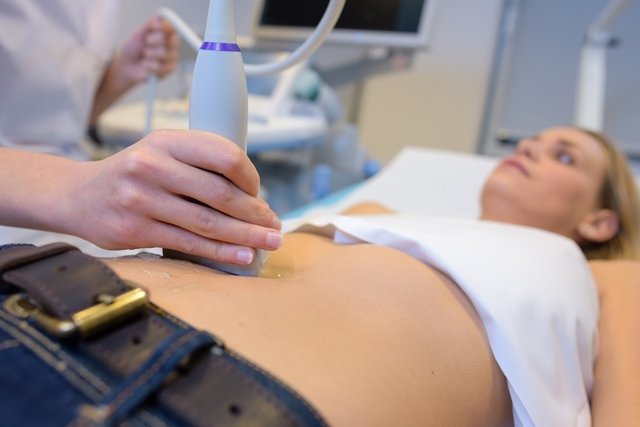Appendicitis is an inflammation of a part of the intestine known as the appendix. This organ is found in the bottom right quadrant of the abdomen. The classic sign of appendicitis is a strong, sharp pain in this area that can be accompanied by a loss of appetite, nausea, vomiting and fever.
Normally, this inflammation occurs due to an accumulation of stool or bacteria inside the appendix, and therefore it can occur at any moment in life. However, the exact causes are still not completely well known.
To treat this condition, the appendix should be surgically removed as soon as possible. If left untreated, the appendix can rupture, which can lead to a systemic infection. Therefore, if you suspect appendicitis, you should proceed immediately to the hospital for testing and diagnosis.
Main symptoms
If you think you may have appendicitis, report your symptoms below to assess your risk:
These symptoms are most frequently occurring in children and adolescents, although appendicitis can occur at any age.
In addition, when pain is dull and lasts for more than a month, it is considered to be chronic appendicitis. This condition is more common in adults over 40 and comes on gradually. This pain can be relieved with analgesics or anti-inflammatories, but it usually comes back. Learn more about what appendicitis feels like by checking-out the most common symptoms.
How it is diagnosed
Appendicitis is diagnosed in a clinical setting through palpation of the abdomen and assessment of the presenting symptoms
Tests available to diagnose appendicitis
Many times, the doctor may order testing to confirm a diagnosis, especially when the symptoms are not typical.
- Blood work: This allows for assessment of white blood cell count, which detects the presence of inflammation in the body
- Urine test: This is ordered to rule out a urinary tract infection, as some symptoms can be similar
- Abdominal ultrasound or CT scan: This allows visualization of the appendix to assess for dilation and inflammation
The best way to confirm if the appendix is present to assess for rebound pain. This is done by lying on your back and pressing down on the lower right quadrant of the abdomen and letting go quickly. If the pain is more intense after letting go, the chance of appendicitis is high. Therefore, it is important to proceed to the hospital and start appropriate treatment.

Possible causes
In most cases of appendicitis, a specific cause is not easily identified. Obstructions in this area of the intestine from backed-up stool or bacteria, seem to be the most common causes.
It is believed that obstruction in the appendix can occur due to relatively common occurrences, like local trauma or a parasitic infection, however it can also happen with more serious conditions, like intestinal tumors, for example.
How it is treated
Surgical removal of the appendix is the most frequently used way to treat appendicitis. This surgery is known as an appendectomy and consists of removal of the appendix through a small cut in the stomach. Usually, people are admitted for a day or two following surgery to ensure that intestinal function returns to normal post-operatively. The doctor will also monitor for any post-op complications, like bleeding or infection.
Even in cases where a diagnosis is not 100% certain, surgery may still be recommended, as there may be a risk for appendicitis is present and rupture is possible.
Possible complications
When appendicitis is not adequately treated, it can rupture and cause 2 main complications:
- Peritonitis: This is a bacterial infection of the abdominal lining, which can cause organ damage. Some symptoms of peritonitis include general malaise, fever, abdominal swelling and shortness of breath.
- Abdominal abscess: This occurs when the appendix ruptures and pus starts to accumulate in the area, which can start to form in sacs.
Both situations are serious and can be life-threatening, which is why treatment for appendicitis should be quick. Many times, treatment involves surgery and IV antibiotics to treat any bacterial infections.
In addition, if an abscess is noted, the doctor should aspirate it with a needle inserted into the abdomen to remove the pus before operating.
